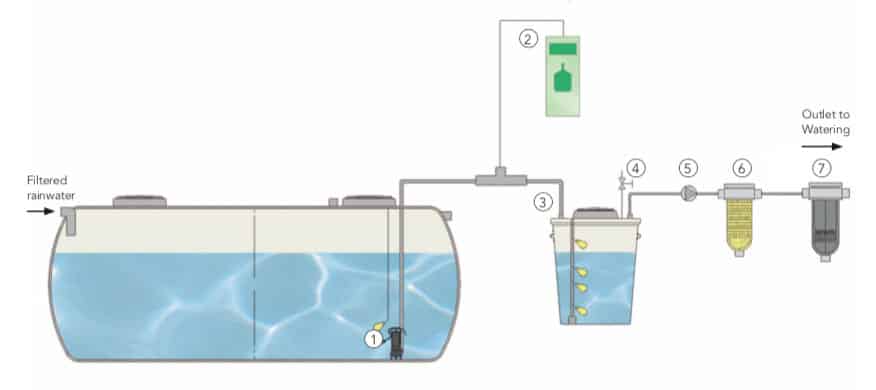
Eng. Balachandran Krishnan
International Technical Sales Manager
Mob. +254 (0) 113 766 039
E-Mail bala.krishnan@aco.com
You are using an old browser that we do not support anymore. Please consider using a modern web browser such as Microsoft Edge, Google Chrome or Firefox for the best website experience.
RAINWATER TREATMENT
If treatment is required after the collection and accumulation, there are two systems for treating rainwater from roofs. These systems are designed for the use of the water treated for watering purposes.
UV TREATMENT
EUV treatment makes it possible to disinfect the water by removing microorganisms (viruses, bacteria, etc.). This system has the advan- tage of not using chemical products in the treatment process.
Rainwater, stored in a collection tank, is pumped into a second tank with a smaller capacity. The second tank is used as the buffer tank for subsequent watering. A 25 micron NOS filter will be installed in the drive pump to be used for watering (not included), followed by a 5 micron NOS filter to remove the particles suspended in the water, and then ultraviolet radiation equipment will be connected, in or- der to sterilise the water. This system guarantees the bacteriological quality at the point where it is used.
If there is a lack of rainwater in the buffer tank, the system opens a 24V DC electrovalve to partially load water for human consumption into the buffer tank.
EQUIPMENT INCLUDED:

The water deposited in the rainwater storage tank coming from the roofs is pumped into a second tank (*). During the pumping process the waters on line (1 mg/l) are slightly chlorinated.
The water to be used is pumped from the second tank (pump not in- cluded). A NOS filter (25 microns) will be installed In the drive for this pump, followed by an activated carbon filter, to make sure the water is colourless, odourless and dechlorinated before use.
If there is a lack of water in the buffer tank, the system opens a 24V DC electrovalve to partially load network water into it.
The advantage that this system has lies in the fact that the residual chlorine makes it possible to conserve the quality of the water in the second tank for a certain period of time.
(*)It is recommended that the capacity of the second tank is similar to the volume utilised per watering period/cycle. For example: volume utilised for a pumping session of 5-15 min.


Eng. Balachandran Krishnan
International Technical Sales Manager
Mob. +254 (0) 113 766 039
E-Mail bala.krishnan@aco.com